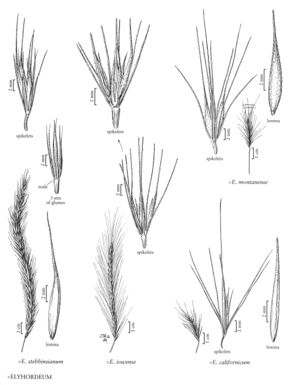Difference between revisions of "×elyhordeum californicum"
FNA>Volume Importer |
imported>Volume Importer |
||
| (5 intermediate revisions by 2 users not shown) | |||
| Line 25: | Line 25: | ||
-->{{#Taxon: | -->{{#Taxon: | ||
name=×elyhordeum californicum | name=×elyhordeum californicum | ||
| − | |||
|authority=(Bowden) Barkworth | |authority=(Bowden) Barkworth | ||
|rank=species | |rank=species | ||
| Line 32: | Line 31: | ||
|basionyms= | |basionyms= | ||
|family=Poaceae | |family=Poaceae | ||
| + | |illustrator=Cindy Roché;Annaliese Miller | ||
| + | |illustration copyright=Utah State University | ||
|distribution=Calif. | |distribution=Calif. | ||
|reference=None | |reference=None | ||
| Line 37: | Line 38: | ||
|publication year= | |publication year= | ||
|special status= | |special status= | ||
| − | |source xml=https:// | + | |source xml=https://bitbucket.org/aafc-mbb/fna-data-curation/src/200273ad09963decb8fc72550212de541d86569d/coarse_grained_fna_xml/V24/V24_414.xml |
|subfamily=Poaceae subfam. Pooideae | |subfamily=Poaceae subfam. Pooideae | ||
|tribe=Poaceae tribe Triticeae | |tribe=Poaceae tribe Triticeae | ||
Latest revision as of 16:23, 11 May 2021
Culms 30-40 cm, glabrous throughout or hairy on the lower portion. Sheaths glabrous; auricles to 0.5 mm; ligules 0.4-1.5 mm, rounded; blades to about 15 cm long, 1-2(3) mm wide, abaxial surfaces glabrous or sparsely hairy, adaxial surfaces scabridulous, all veins equally prominent. Inflorescences spikelike, 2.5-5 cm long, 7-10 mm wide excluding the awns, 20-30 mm wide including the awns, straight, nodes with 3 spikelets; internodes 2.2-4 mm, bases about 1/2 as wide as the apices. Spikelets 8-10 mm excluding the awns, 25-28 mm including the awns, with 1-2 florets, the lateral spikelets shortly pedicellate, the central spikelet sessile. Glumes 15-35 mm including the awns, setaceous, straight; lemmas 7-8 mm, smooth throughout or scabrous distally, awned, awns 10-20 mm, straight or slightly divergent at maturity; anthers about 1.5 mm.
Discussion
×Elyhordeum californicum consists of hybrids between Elymus elymoides or E. multisetus and Hordeum brachyantherum subsp. brachyantherum. It was described by Bowden (1958) on the basis of specimens collected in California. It seems probable that it will be found at many locations where the two parents grow together.
Selected References
None.
